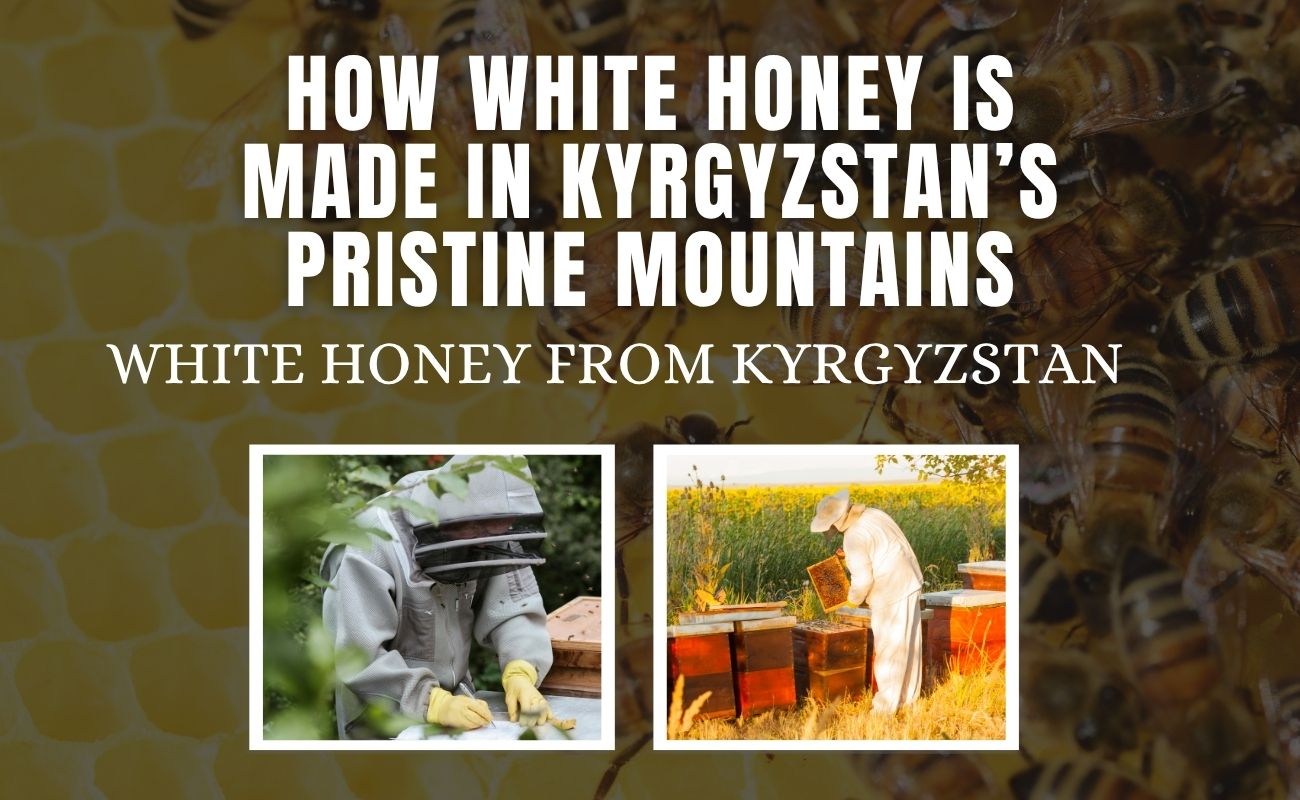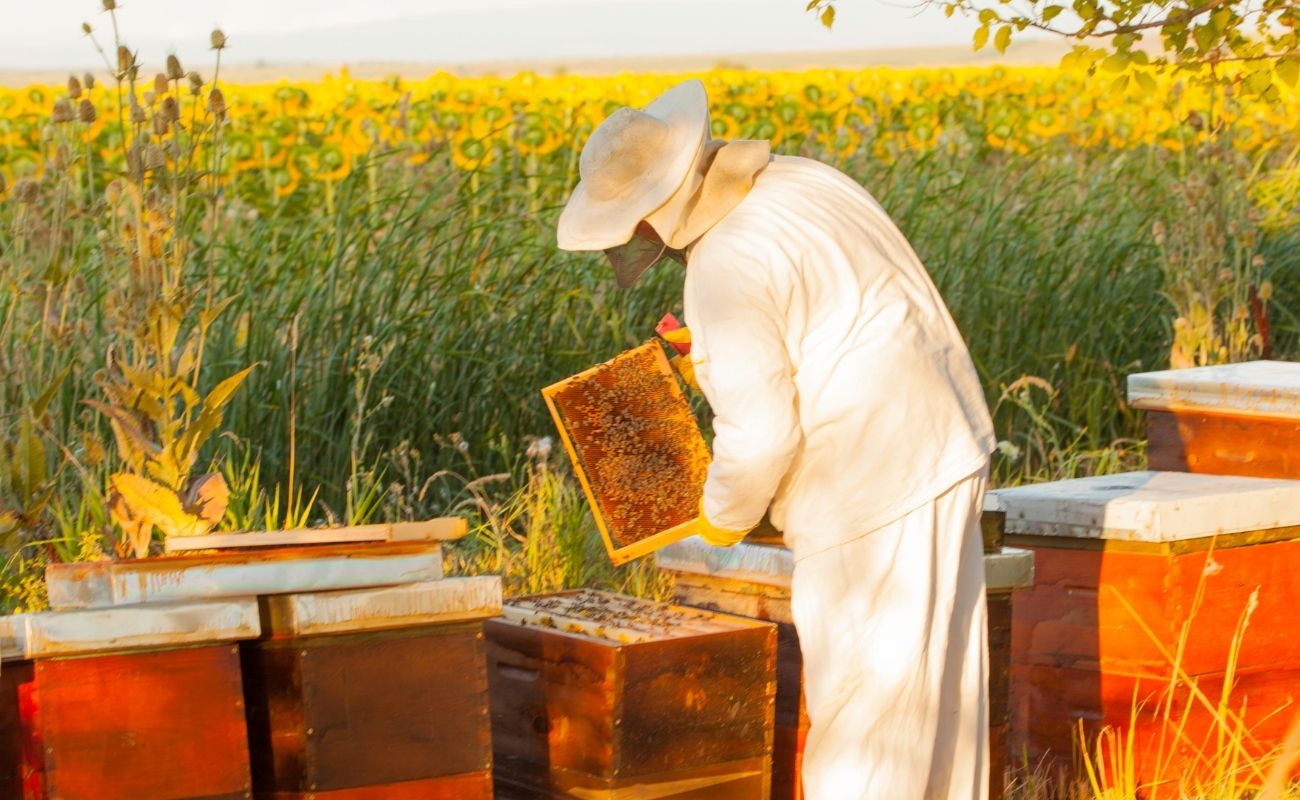Blog
How White Honey Is Made in Kyrgyzstan’s Pristine Mountains

Tucked away in the heart of Central Asia, Kyrgyzstan is a country of soaring peaks, untouched valleys, and crystal-clear air. It’s here, among the rugged slopes of the Tien Shan Mountains, that one of the world’s rarest and most luxurious honeys is produced: white honey.
Unlike the golden or amber varieties commonly found on store shelves, white honey from Kyrgyzstan has a creamy, pearl-like appearance and a delicate, floral flavor. But what truly sets it apart is how it’s made—a process that blends ancient tradition, remote alpine landscapes, and the quiet collaboration between bees and nature.
Let’s take a closer look at how this rare honey is harvested and why it has become one of the most sought-after natural products worldwide.
What Makes White Honey from Kyrgyzstan Unique?
Before diving into the production process, it helps to understand what sets Kyrgyz white honey apart.
- Color & Texture: Pale ivory to snow-white, with a creamy, spreadable consistency.
- Flavor: Mild, floral, slightly tangy—perfect for refined palates.
- Purity: Produced in remote, pesticide-free meadows, free from industrial pollution.
- Seasonality: Harvested just once a year during a short summer window.
The bees gather nectar primarily from sainfoin, clover, sweet vetch, and wild thyme, which bloom in abundance during Kyrgyzstan’s alpine summer.
Step-by-Step: How White Honey Is Made in Kyrgyzstan

1: Beekeeping in High-Altitude Pastures
The journey begins in late spring when Kyrgyz beekeepers—many from families who have practiced this craft for generations—prepare their mobile hives.
They transport their bees to high-mountain zones (1,500 to 2,800 meters above sea level) where wild alpine flowers grow in isolation. These pristine meadows are often only accessible by horse or off-road vehicles.
Why the altitude matters:
- Less air pollution
- Richer, untainted floral sources
- Slower nectar crystallization, leading to creamier honey
🐝 Interesting fact: The higher the altitude, the purer the nectar—and the slower the honey spoils.
2: Short and Precious Foraging Season
Unlike mass-produced honey, white honey is harvested during a short window, usually between late June and early August. This is when alpine flowers are in full bloom.
During this time:
- Bees work intensively, collecting nectar from thousands of wildflowers.
- Beekeepers monitor their hives daily to ensure optimal conditions.
- No chemicals, antibiotics, or artificial feeding are used.
The bees are free to roam and choose only the highest-quality nectar, which gives white honey its distinct flavor and color.
3: Traditional Harvesting and No Heat Processing
Once the honeycombs are full, the harvest begins—typically only once per season.
Here’s how it’s done:
- Beekeepers manually extract the honey using traditional, non-mechanical tools.
- The honey is then filtered naturally (no ultra-filtration or additives).
- Unlike supermarket honey, white honey is never heated. This preserves:
- Live enzymes
- Antioxidants
- Amino acids
- Antibacterial properties
This raw, cold-extraction method ensures the honey maintains its creamy texture and therapeutic qualities.
Read More: 5 Surprising Uses of White Honey Kyrgyzstan
4: Churning and Creaming: Achieving the Signature Texture
The magic doesn’t stop at harvesting. What gives Kyrgyz white honey its creamy, whipped texture?
The answer lies in natural crystallization and churning:
- White honey is left to crystallize slowly at cool mountain temperatures.
- It is then gently stirred or churned to break up crystals, creating a uniform, spreadable consistency.
- No dairy or additives are used—just raw honey and time.
This process results in the unique, buttery texture that sets Kyrgyz white honey apart from conventional, runny honeys.
5: Packaging with Care
Once the honey reaches its final form, it is carefully jarred by hand in small batches. Labels often include:
- Region of harvest (e.g., Naryn, Issyk-Kul)
- Beekeeper’s cooperative or family name
- Harvest year
This traceability assures buyers that they are getting a genuine, single-origin product.
🛒 Looking to try it? Be sure to buy from verified importers or artisan food stores that source directly from Kyrgyz beekeepers.
Why This Matters: Sustainability and Cultural Heritage
Choosing white honey Kyrgyzstan isn’t just a culinary experience — it’s a way to support:
- Sustainable beekeeping practices
- Local economies in remote mountain communities
- The preservation of traditional knowledge
In a time where industrial agriculture dominates, Kyrgyz white honey offers a sweet reminder that slow, natural, and ethical food production is still possible — and delicious.
Final Thoughts: More Than Just Honey
White honey from Kyrgyzstan is a testament to what nature can produce when left untouched. It’s a symbol of purity, tradition, and harmony between people and their environment.
Whether you’re enjoying it for its flavor, health benefits, or cultural richness, every spoonful tells a story — one that begins in the flower-filled meadows of Kyrgyzstan’s high mountains and ends at your table.
So next time you’re seeking something truly unique and nourishing, remember this hidden gem from the heart of Central Asia.
Read More: Is White Honey Better Than Brown Honey? A Tasty Comparison
Read More: White Honey Kyrgyzstan | 100% Natural & Raw Mountain Honey
